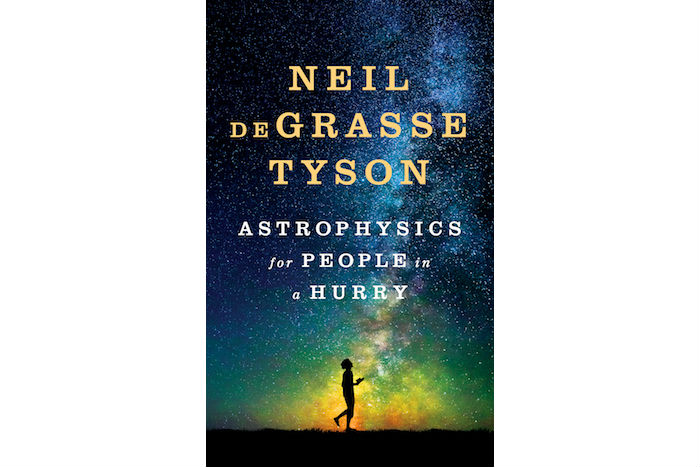Book Review: 'Astrophysics for People in a Hurry' by Neil DeGrasse Tyson

Scientists are confidently predicting that the two stars of binary system KIC 9832227, about 1,800 light years away in the northern wing of the Cygnus constellation, will collide with each other sometime between 2021 and 2023, creating a spectacular astronomical event—a red nova, the brightest star in the night sky, visible on earth even without a telescope. There’s no denying it—it’s science. “The good thing about science,” says astrophysicist, Director of the Hayden Planetarium in New York, StarTalk podcaster and East Hampton resident Neil DeGrasse Tyson, “is that it’s true whether or not you believe it.” Ame…err, right on!
Dr. Tyson’s new book, Astrophysics for People in a Hurry (Norton, $18.95), gives us as many reasons to believe as there are stars in the sky, which is to say, a near infinite number. Tyson’s grasp on this tricky subject is masterly; his ability to communicate his subject matter, second to none; his delivery and style, disarmingly simple and accessible; he’s also funny in that dad-humor kind of way, as in “Einstein was a badass.” Sure, there will be instances of head scratching as you try to untangle the difference between a quark and photon, or to decipher just how small a trillionth of a second is. But we can’t all be astrophysicists.
At times, through no fault of his own, Tyson makes us consider our insignificance in the 14,000,000,000-year history of our cosmos. Consider this doozy: “Without the billion-and-one to a billion imbalance between matter and antimatter, all mass in the universe would have self–annihilated, leaving a cosmos full of photons and nothing else.” Essentially, if conditions were only slightly different in the very first second after the big bang, there would be absolutely nothing—a universe without galaxies, stars, earth, or even Dan’s Papers. Can you imagine!? As Tyson admits later, the utter scale of the universe and the topics he discusses in Astrophysics is “a depressing thought to some, but a liberating thought to me.” If you’re susceptible to the former feeling, perhaps, after finishing Astrophysics, you’ll be feeling more like Dr. Tyson—abuzz with all the possibilities of the universe.
Not to worry though. We’re just as often made to celebrate the idea that despite all the odds against it, life—you, me, us—not only exists, but has thrived and evolved until the point that we can look up at the night sky and at least try to understand it. And as any science documentary watcher already knows, Tyson has a unique and infectious way of simplifying such mind numbingly complex issues and ideas in such fluid, easy-to-comprehend ways that you’ll be explaining the origins of the universe and dark energy to friends and family in no time. Astrophysics is no different.
So who might this slim volume be perfect for? Just about anyone. Curious to start understanding how the universe works? Go buy this book. Are you a science teacher looking for ways to better explain the most complex astrophysical phenomena to students or casual inquisitors? Go buy this book. Are you a budding young scientist whose curiosity is as boundless as the cosmos? Go buy this book. Does a loved one, despite your best efforts to convince them otherwise and scientific proof to the contrary, still believe humans and dinosaurs cohabited earth? Go buy them this book.
It may not be the perfect sunny-day beach read, though maybe it is—we don’t know your life. At the very least, a good reader could make a serious dent in this relatively short book on a Jitney or LIRR ride to or from Manhattan. Better yet, get yourself a book light, head down to the nearest beach after sunset and dive in to Astrophysics.
Astrophysics for People in a Hurry is available at local bookstores.









